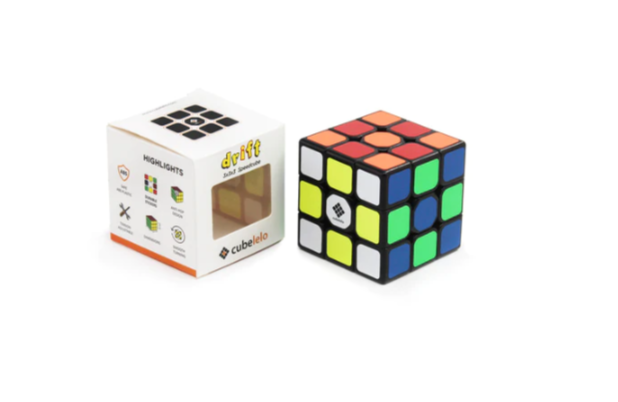When it comes to speedcubing, there’s more to it than just fast fingers and a good cube. One of the key factors that separate the fastest cubers from the rest is their knowledge and use of algorithms. In this article, we’ll explore what algorithms are, how they are used in speedcubing, and how you can master the most efficient techniques to become a faster cuber.

What are the Algorithms in Speedcubing?
In simple terms, algorithms are a sequence of moves that are used to solve a particular step or pattern in a cube. These algorithms are created based on mathematical algorithms that have been developed specifically for the Rubik’s speed cube and its variations. In speedcubing, these algorithms are used to solve the cube as quickly as possible.
The Role of Algorithms in Speedcubing
Advanced Algorithms for Speedcubing
The use of algorithms in speedcubing goes beyond the beginner’s layer-by-layer method. Advanced cubers have developed more sophisticated algorithms that allow them to solve the cube in fewer moves and faster times. One such algorithm is the Fridrich method, which was developed by Jessica Fridrich in the 1980s and is now used by many top competitors.
This method involves solving the first two layers at once and then using a series of algorithms to orient and permute the last layer in a specific order. Another advanced algorithm is the ZZ method, which involves solving the last layer first and then using a series of algorithms to solve the first two layers. These advanced algorithms require extensive practice and memorization but can lead to faster solving times.
The Role of Practice in Algorithm Mastery
While algorithms are an important tool for speedcubers, they are not the only factor in achieving fast solving times. Practice is essential for mastering algorithms and developing efficient techniques. Speedcubers often spend hours a day practicing and honing their skills. It’s not enough to simply memorize algorithms – speedcubers must also develop muscle memory and the ability to recognize patterns quickly. By practicing regularly and analyzing their solutions, speedcubers can identify areas for improvement and refine their techniques.
Choosing the Right Cube for Algorithmic Speedcubing
The choice of the cube can also play a significant role in algorithmic speedcubing. While any speed cube can be used for algorithmic solving, some cubes are better suited for certain techniques. For example, the moyu rs3m 2020 is a popular cube among speedcubers due to its smooth and fast turning, making it well-suited for advanced algorithms. Other cubes, such as the Gan 356 X, offer customizable magnets and tensions that can be adjusted to suit individual preferences. When choosing a cube for algorithmic speedcubing, it’s important to consider factors such as speed, stability, and customizability.
The Future of Algorithmic Speedcubing
As algorithms and techniques continue to evolve, it’s likely that speedcubing records will continue to be broken. In recent years, the average time to solve a Rubik’s cube has dropped significantly, and the world record has been shattered multiple times. With the help of advanced algorithms, speedcubers are constantly pushing the boundaries of what is possible. It’s also possible that new cubes and technologies will emerge that can enhance speedcubing even further. One example is the GoCube, a smart cube that can track solve times and provide real-time feedback to help speedcubers improve their skills. With continued innovation and dedication, the future of algorithmic speedcubing looks bright.
How to Master the Most Efficient Techniques
To become a faster cuber, it’s important to not only memorize algorithms but also understand how to use them efficiently. Here are some tips to help you master the most efficient techniques:
Practice, Practice, Practice: Repetition is key when it comes to mastering algorithms. Practice them over and over until they become your nature.
Learn Advanced Algorithms: As you become more proficient, start learning more advanced algorithms that can help you solve the cube even faster.
Watch Tutorials: There are plenty of online tutorials available that can help you learn new algorithms and techniques. Take advantage of them and learn from the pros.
Analyze Your Solve: After each solve, take the time to analyze your performance and identify areas where you can improve. This will help you to identify which algorithms you need to focus on and how to use them more efficiently.
Experiment with Different Algorithms: Don’t be afraid to try different algorithms and experiment with new techniques. You never know what you might discover!
Common Mistakes in Using Algorithms
While algorithms are essential in speedcubing, there are some common mistakes that beginners often make. One mistake is relying too much on algorithms and not enough on intuition. Algorithms should be used as a tool, not a crutch. You should also practice solving the cube without algorithms to develop your intuition and problem-solving skills.

Another mistake is memorizing too many algorithms too quickly. It’s better to focus on mastering a few algorithms first before moving on to more advanced ones. Trying to memorize too many algorithms at once can be overwhelming and hinder your progress.
Finally, some beginners make the mistake of not practicing enough. Speedcubing requires a lot of practice and dedication. You should aim to practice every day and track your progress. With enough practice and determination, you can become a skilled speedcuber and impress your friends and family with your lightning-fast solving skills.
Conclusion
Algorithms are an essential part of speedcubing and can help you solve the cube quickly and efficiently. The Moyu RS3M 2020 cube is a great cube to use for speedcubing, as it is lightweight, smooth, and customizable. When using algorithms, it’s important to practice, memorize, and apply them correctly. Avoid common mistakes such as relying too much on algorithms, memorizing too many at once, and not practicing enough. With enough practice and determination, you can become a skilled speedcuber and impress your peers with your fast-solving times.

